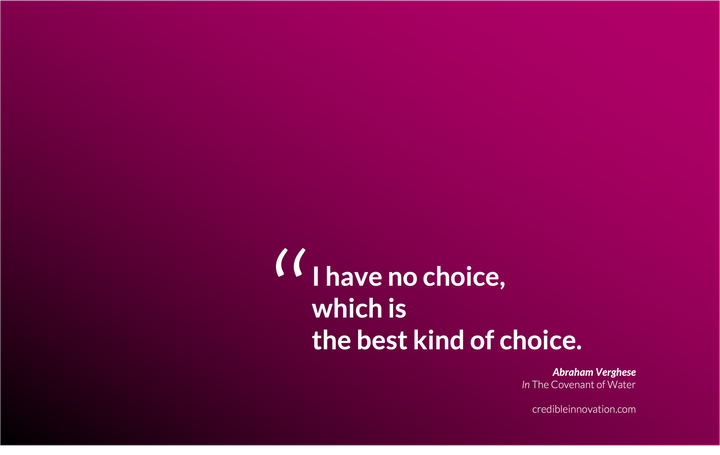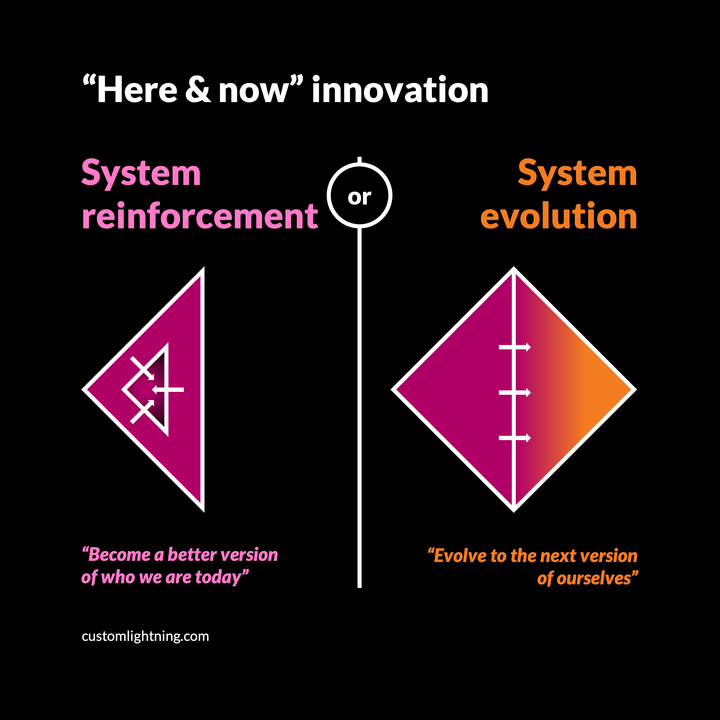[Case study] Why innovators must excel at everything
Equally value all work that makes a venture viable, not just "cool" stuff. You need it all to succeed.
![[Case study] Why innovators must excel at everything](https://images.unsplash.com/photo-1562742505-69a769e64026?crop=entropy&cs=tinysrgb&fit=max&fm=jpg&ixid=M3wxMTc3M3wwfDF8c2VhcmNofDEyfHxCaW9sb2dpc3R8ZW58MHx8fHwxNzEwNDYyOTEyfDA&ixlib=rb-4.0.3&q=80&w=1200)
TL; DR
Innovators often cherish simplicity. But we can over-do it.
Creating new growth businesses comes with many demands. We must honor them all if we want our ventures to have any chance at success.
After all, even "startup" is short for "startup company." Everything that a company needs must be created for the first time in a new venture. Often, this requires significant creativity. (In other words, "front-end" work can mean finance, HR, or supply chain just as much as design or trend & foresight.)
This is even true for corporate innovation. In that setting, lots of processes and capabilities already exist. But they tend to be too heavy-duty and focused on optimization to be of use with young ventures. So here, too, we must value all kinds of work equally.
In this case study, a company called ATS brings to life the range of work that credible innovation work takes.
The story
Minnesota Public Radio's Dan Kraker reported on a fascinating company based an hour north of where I live in Minnesota.
Advanced Telemetry Systems (ATS) has been in the business of wildlife tracking (think radio collars on critters ranging "from bees to bears") since university researchers founded the company in the 1960s.
The story tells us how the company's products help biologists achieve a whole range of goals, from extreme ones like trapping dangerous hornets and invasive pythons to more benign needs like tracking migrating animals.
Before technology like ATS' came about, "the way people got data on animals was they either would mark them, and then hopefully see them again, or set out a bunch of traps hoping they'd recapture them," as the company's founder explains.
The story brings to life the marvels of using the products and gives voice to the people who make it happen.
[Source: Dan Kraker. Minnesota Public Radio News (2024)]
The point for doing credible innovation work
ATS’ evolution shows beautifully how the elements of a credible innovation program must all come together.
Any one element is necessary but not enough. And if that makes it seem like success is hard to pull off in innovation, then … well, yes, that is the point. 🤪
For example, ATS had:
Not just one but several must-do purposes
Originally, it was about scientists who had received funding to study animals but had a hard time finding the critters that they had tracked. This fits neatly into the Munger Rule of must-do purposes, namely by making ATS’ tools a way to avoid embarrassment.
Later, other critical, unavoidable purposes emerged too. My favorite one: Capturing invasive pythons from inhabited areas. This matches another one must-do purpose from the Munger Rule: avoiding legal trouble.
By the way, the Munger Rule of course is nowhere near the only way to spot a must-do purpose. Often, they are extremely hard to engineer but equally obvious once you have them, such as, in ATS’ case: “Killer hornets will kill all our honey bees.” Or “invasive pythons are hanging out near a bunch of homes.” It doesn’t take Sherlock Holmes to figure out that these problems matter.
But even such a must-do purpose was not enough. They also had:
Desirability and Feasibility and Viability
I cringe when corporate innovators glibly preach about achieving "DVF," ideally with a Venn diagram showing overlap among all three. Anyone who has ever actually tried to achieve all three knows how utterly hard that is! Two out of three? Sure. But all three? Absurdly hard. Oh, and that's not even considering the fourth factor of Agreeability or Acceptability, which one must also achieve, if doing innovation inside existing orgs rather than startups.
Back to ATS then: What's impressive is that ATS has has clearly achieved all of D, V, and F, considering their longevity and expansion over time.
This was not a given. In the "early 1960s, when founder Larry Kuechle and other University of Minnesota researchers were among the early pioneers of radio tracking," it can't possibly have been cheap to secure this kind of equipment. Viability was surely a struggle!
I wish I knew the story of how they overcame that cost problem of using new, possibly experimental tech. But my hunch is that they still managed to advertise cost savings, even if their devices were pricey. That's because without their solution, entire research projects may have failed if researchers couldn't find the animals that they were observing. Or, even if things were less dire, research teams might have wasted expensive days of field work looking for hiding animals. A radio tracker, even an expensive one, might have saved money at that scale.
And finally, they have developed:
A large portfolio of bets
Do yourself the favor of exploring the absurdly wide range of animals that ATS' systems can track, or, alternatively, the diversity of solutions they offer, either through their own products or licensed ones.
Surely, there have been duds along the way. Surely, some products contribute significant revenue, others profit, and yet others benefits of another kind, like access to relationships, credibility in the space, public interest, or something else. It's unlikely bordering on impossible that any one (or few) products can contribute all of these benefits.
And yet, many corporate innovators (or their bosses) give in to the delusion that they can somehow predict "winning" solutions beforehand. They either pick a single project or, at most, a handful of them and hope to make money hand over fist anyway.
A more realistic approach, as ATS shows us here, is to consider a massive portfolio of solution candidates. Directionally, it needs to start out with well north of 100 options (though that count gets culled fast) to have a reasonable chance at scoring some winners. (You can see another example of that here.) And even some of those "winners" will only be moderate wins. Only much later might one identify a yet smaller share of solutions that can become truly earth-shattering successes.
Overall then, ATS reminds us to:
- Accept that innovation work is absurdly hard.
- Pursue must-do purposes.
- Respect the difficulty of achieving all of DVFA.
- Build a much larger portfolio than you might think necessary.
Footnotes
Find the full story here (external link)
Kraker, Dan. "Minnesota-grown technology helps scientists track wildlife around the globe" (Mar. 13, 2024). MPR News. Accessed Mar. 14, 2024.
Organizations involved or mentioned (external links)
Advanced Telemetry Systems (ATS)
North Carolina Museum of Natural Sciences
Washington State Department of Agriculture
Credits
Photo "Person in red wetsuit” by NOAA on Unsplash
Disclaimers
External links for your convenience. I do my best to link to reputable sources. But I cannot guarantee or accept liability for 3rd-party links beyond my control.
I have no affiliation with or investments in organizations mentioned in case studies–nor do I ever unless explicitly called out.
The organizations mentioned do not endorse me in any way. Nor do I endorse them. These case studies are offered merely for general information purposes. They do not imply that certain choices or actions are effective or ineffective, either for the organizations mentioned or for you. Consult your own professionals before taking action on anything mentioned here.
I have received no incentive of any kind for mentioning or not mentioning organizations or for the perspectives I take. Opinions voiced above represent my subjective, editorial take, based on public data.
I use all third party content in accordance with "fair use," "open source," and similar permitted uses, to the best of my knowledge. Please contact me in case of legitimate questions.




